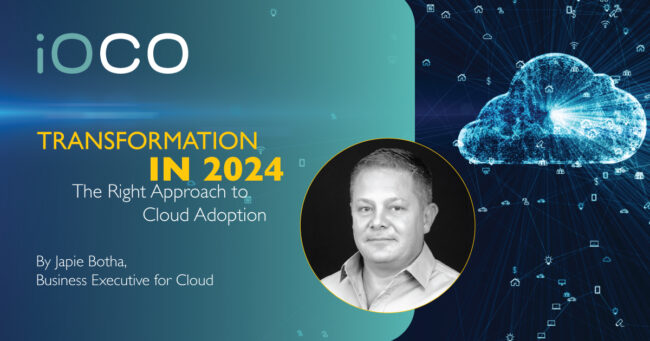In a rapidly evolving digital landscape, businesses in South Africa face challenges in harnessing the true power of technology to meet client demands. As innovation continues to press forward, it is essential that businesses keep pace with technological advances. When it comes to moving to the cloud, for example, multicloud seems to be the strategy of the day – with more and more businesses utilising multiple cloud providers.
It’s no longer just about the journey to the (single) cloud. Forward thinking businesses are hinging their cloud strategies on the ability to craft a unique cloud solution, purpose built to meet specific needs, using the best services from each cloud provider. Deploying a multi-cloud solution therefore allows users to cherry-pick the best fitting offerings from various cloud platforms, crafting a unique solution. In fact, Oracle’s 2023 S&P Global multicloud survey shows that 97% of organisations use more than one cloud provider today.
As agility, innumerable technology options, and large potential for cost savings continue to propel the rise of multicloud, it is important to become familiar with this ecosystem, its challenges, and its benefits. With a multicloud strategy, businesses are empowered to use the best elements from various cloud platforms, whether private, public or a combination of the two. With the right planning in place, this can offer a wealth of benefits, including not being tied to a single provider, increased efficiencies in operations, total reliability, and advanced security and regulatory compliance.
When it comes to planning for multicloud adoption, the first step is to develop a tactical plan. The strategy must be linked not only to the overarching business plan but also to a clear digital strategy, continuously aligned with key drivers in the market, and designed to deliver against stakeholder expectations. Here, the business must strive for a deep understanding of the impact that this transformation will have on people, applications, and technology within the organisation. To achieve this, the project must begin with sound, data driven insights within the specific business’ context.
A crucial element to success will undoubtedly be the implementation partner chosen to work with. Innovation, cloud, technology – it can all be heavily complex and expensive. Partnering with implementation specialists that simplify the offering usually leads to far greater successes down the road. The key is identifying providers that ease the process with less complex, more affordable solutions, while being geared to deliver against any cloud strategy.
A cloud journey typically begins with an assessment phase, during which information is gathered. This is then followed by carefully planning which workloads will be migrated and in which fashion, while scrutinising each workload against the 7 Rs of Cloud Adoption. In the end this is to be layered across a full understanding of the business intent, and a total cost of ownership exercise. A cloud adoption plan, journey map, and migration could be quite a lengthy exercise if done correctly, but the outcome is almost always favourable.
Going hand-in-hand with the partner chosen, is the foundation built prior to implementation. Experts across the world agree that most cloud implementations fail as the result of a lack of strategic intent at the onset. Added to this, Medium Magazine notes “following the trend” and trying to apply a one-size-fits-all approach as the top reason for failure. Future Processing highlights the importance of choosing the right cloud partner, while CIO Magazine shares survey results that pinpoint a lack of understanding of cloud security and compliance, lack of clearly-identified business objectives for migrating to the cloud, and lack of planning as top reasons for failure.
What every multicloud project needs to be successful is total buy-in to maximise adoption. With this approach, businesses are modernising and digitising faster than ever before – while successfully bridging the gap between current and future business aspirations. It’s the cloud journey at its best, and it demands a sound strategy with a reliable partner to steer the course. The goal? Innovation, cost effective infrastructure management, and seamless business continuity. The result? A wholly transformed business.
Written by: Japie Botha, Business Executive for Cloud, iOCO

